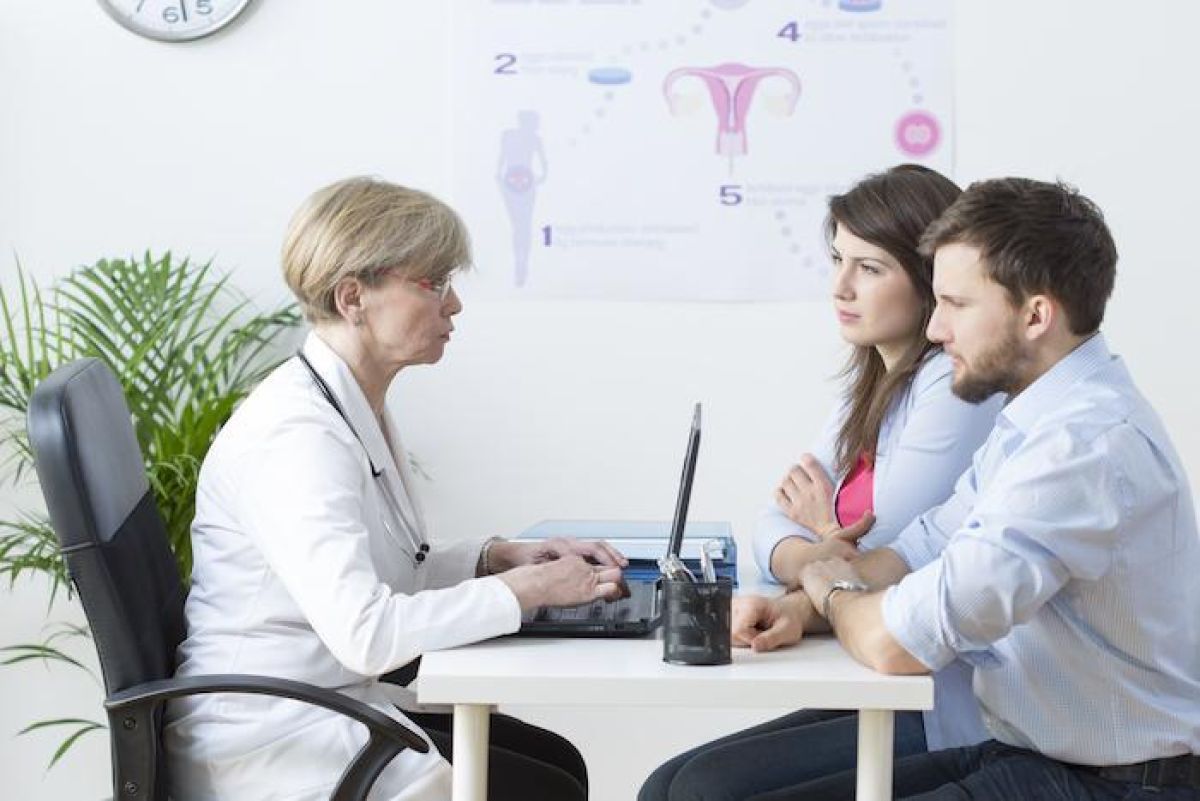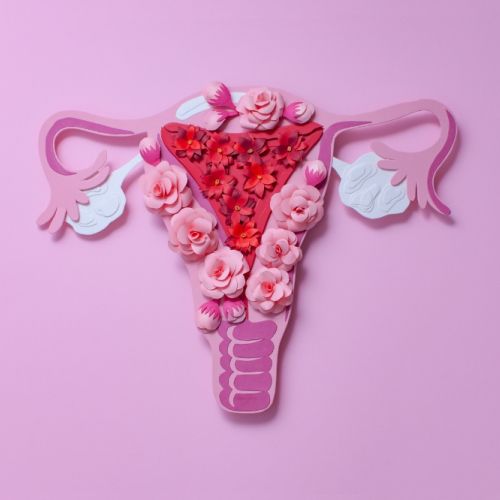What to Expect from IVF

In-vitro fertilization (IVF), is the primary form of assisted reproductive technology, which was responsible for 1.9% of births in 2018. During IVF, your eggs are collected and your partner’s sperm is used to fertilize the eggs in a laboratory. A fertilized egg is transferred into your uterus, and if it implants, you become pregnant.
At the California Center for Reproductive Health, we customize your IVF treatment to give you the best outcome. Here’s what to expect if you’ve made the choice to go through this procedure to conceive.
A possible first step: ovulation suppression
Ovarian suppression isn’t the first step for all women, but if we decide this is needed, you’ll be given birth control pills or a medication called leuprolide. This gives us better control over the timing of your cycle.
Stimulating ovulation
Ovarian stimulation is usually achieved with hormone injections. The shots most likely include follicle-stimulating hormone (FSH) and/or luteinizing hormone (LH). We determine the right combination for your body.
During this ovarian stimulation, we monitor you closely with blood tests and ultrasounds to evaluate the number of egg follicles that are developing and how your uterine lining is thickening.
Triggering maturation
The doctors administer a “trigger shot” when your follicles are just about ready. This shot consists of human chorionic gonadotropin (hCG) or leuprolide to encourage the eggs to mature and stimulate ovulation.
Egg harvesting
About 36 hours after your trigger shot, we’re ready to retrieve your eggs. You’re placed under light sedation or given pain medication. We use an ultrasound-guided needle inserted transvaginally to reach your ovaries and remove the egg from each of your follicles. Usually, 10-15 eggs are harvested in any one cycle, but sometimes it’s just a few or more than 15.
Sperm samples
During egg harvesting, or close to that time on the same day, your partner produces a sperm sample. If you’ve opted for donor sperm or previously frozen sperm, it’s being prepared.
Fertilizing the egg
Eggs are fertilized in one of two ways: intracytoplasmic sperm injection (ICSI) or standard insemination. With ICSI, the doctors inject a single sperm into an egg. With standard insemination, your eggs are placed in a petri dish with more than 50,000 sperm in hopes one pair meets. The type of fertilization technique depends on your particular situation and the doctor’s recommendations.
Monitoring the embryo
The eggs that have potentially been fertilized are monitored for fertilization. If an embryo or embryos form, they’re monitored for healthy growth and development. The doctors look for an embryo of 6-8 cells by three days after fertilization and a healthy blastocyst by day five.
If you’ve planned on preimplantation genetic testing, this is done before implantation. A few cells are removed and tested.
Preparing for transfer
One to two days after your eggs are fertilized in the lab, you start a progesterone supplement to optimize your uterine lining for implantation. This may be administered by injection, suppositories, or vaginal gel. You may continue this progesterone supplement at least through confirmation of pregnancy.
Transferring the embryo
Within 3-5 days after your egg harvesting and fertilization, the embryo(s) are transferred to your uterus. The doctor uses ultrasound to guide a catheter through your vagina and cervix into the uterus. The hope is that an embryo implants and produces a viable pregnancy. You’re awake for this process and can often watch it on a nearby monitor.
Immediately following the transfer and for the next five days or so, we recommend you take it easy and avoid sexual intercourse so you don’t cause contractions that could deter implantation.
Testing for pregnancy
We know you’re eager to find out the results of your IVF procedure, but resist the urge to use a home pregnancy test in the first few weeks after the embryo transfer. You’re likely to get a false positive due to hormones used during the process or a false negative because it’s too early to detect pregnancy.
We will do a blood test about two weeks after the embryo transfer to determine if the IVF procedure was successful.
Dealing with infertility is extremely difficult and sensitive, but our team at the California Center for Reproductive Health is ready to help you. Whether it’s helping a woman overcome infertility due to endometriosis, reversing a tubal ligation, or addressing ovulatory failure, the doctors and staff provide expertise and compassion.
Traditional IVF is just one of many fertility treatments possible. Call one of the offices in Encino, Santa Monica, Valencia, Alhambra, and West Hollywood, California, to set up a consultation and evaluation. Alternatively, you can schedule an appointment online.
Eliran Mor, MD
Reproductive Endocrinologist located in Encino, Valencia & West Hollywood, CA
FAQ
What does a reproductive endocrinologist and infertility specialist do?
Reproductive endocrinology and Infertility is a sub-specialty of Obstetrics and Gynecology. In addition to managing medical and surgical treatment of disorders of the female reproductive tract, reproductive endocrinologist and infertility (REI) specialists undergo additional years of training to provide fertility treatments using assisted reproductive technology (ART) such as in vitro fertilization.
Reproductive endocrinologists receive board certification by the American Board of Obstetrics and Gynecology in both Obstetrics and Gynecology and Reproductive Endocrinology and Infertility.
When should I see an REI specialist?
In general, patients should consider consulting with an REI specialist after one year of trying unsuccessfully to achieve pregnancy. The chance of conceiving every month is around 20%, therefore after a full year of trying approximately 15% of couples will still not have achieved a pregnancy.
However, if a woman is over the age of 35 it would be reasonable to see a fertility specialist earlier, typically after 6 months of trying.
Other candidates to seek earlier treatment are women who have irregular menses, endometriosis, fibroids, polycystic ovary syndrome (PCOS), women who have had 2 or more miscarriages, or problems with the fallopian tubes (prior ectopic pregnancy).
What are the reasons we are having trouble conceiving?
Approximately 1/3 of the time cause for infertility is a female factor, 1/3 of the time a male factor, and the remaining 1/3 a couples’ factor.
At CCRH, we emphasize the importance of establishing a correct diagnosis. Both partners undergo a comprehensive evaluation including a medical history and physical exam.
Furthremore, the woman’s ovarian reserve is assessed with a pelvic ultrasound and a hormonal profile. A hysterosalpingogram (HSG) will confirm fallopian tube patency and the uterine cavity is free of intracavitary lesions. A semen analysis is also obtained to evaluate for concentration, motility, and morphology of the sperm.
Additional work up is then individualized to direct the best possible treatment option for each couple.
What is IVF? What is the process like?
In vitro fertilization (IVF) is the process that involves fertilization of an egg outside of a woman’s body.
The process starts with fertility drugs prescribed to help stimulate egg development. In your natural cycle, your body is only able to grow one dominant egg, but with stimulation medication we can recruit multiple eggs to continue to grow. After about 8-10 days of stimulation, the eggs are surgically retrieved and then fertilized with sperm in a specialized laboratory. Fertilized eggs are then cultured under a strictly controlled environment within specialized incubators in the IVF laboratory for 3-5 days while they develop as embryos. Finally, embryos (or an embryo) are transferred into the uterine cavity for implantation.
Should I have IVF?
Before deciding if IVF is the right choice, it’s important to sit down with an REI specialist to discuss available treatment options. For some people, other methods such as fertility drugs, intrauterine insemination (IUI) may be the best first choice treatment. At CCRH, we believe each individual couple is unique and not everyone needs IVF.
Is the IVF procedure painful?
While not painful, the fertility medications may some side effects including headaches, hot flashes, mood swings, and bloating. The injection sites may also bruise.
Will IVF guarantee a baby?
Unfortunately, no. Many people think once they start IVF it’s a matter of time that they will be pregnant and have a baby. But according to national statistics per the Society of Assisted Reproduction (SART), on average 40% of assisted reproduction cycles achieve live births in women under age 35. The chances of success then continue to decrease with advancing age.
At CCRH, we employ only evidence-based interventions to ensure patient safety and optimal outcome. While we cannot guarantee a baby, we guarantee that you will receive the best, most advanced, personalized care to help you maximize your chance of a baby.
What is the success rate for IVF?
The average IVF success rate (success measured in live birth rate) using one’s own eggs begins to drop around age 35 and then rapidly after age 40. This is due to the decline in egg quantity and egg quality as a woman ages.
Our clinic’s success rate consistently beats the national average year after year.
Do insurance plans cover infertility treatment? How much does IVF cost?
Individual insurance plans often do not have any coverage for infertility treatments. If you have a group plan, you can call members services to see if they have coverage for infertility (including consultation/workup and IVF).
After your consultation with our REI specialist, one of our dedicated account managers with sit with you to go over the cost of treatment.




